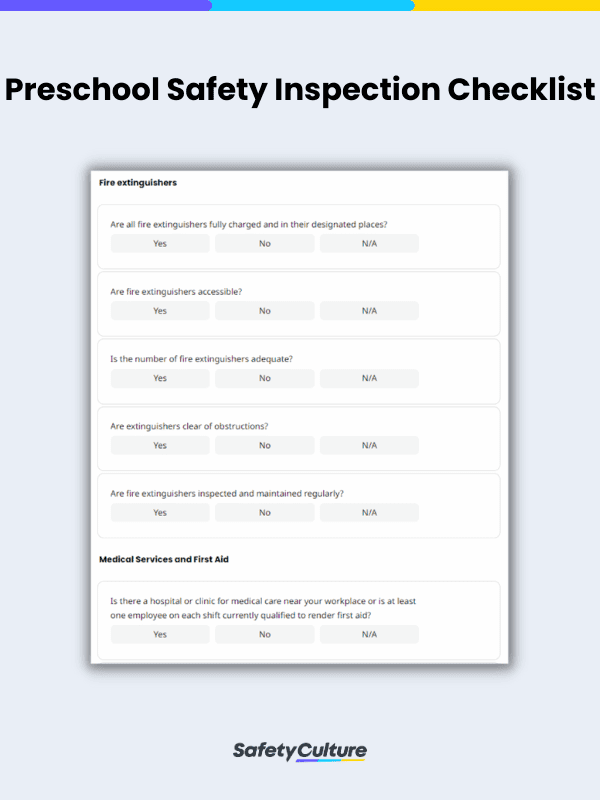What is a Preschool Safety Check?
A preschool safety check is an inspection conducted regularly in preschools to help ensure that the classrooms and the whole educational facility is free from health and safety hazards and that it is an ideal venue for early childhood education.
What is a Preschool Safety Checklist?
Sometimes called the preschool classroom safety checklist, a preschool safety checklist is a tool used when conducting health and safety inspections of preschools to catch and correct any hazards that may expose preschoolers and teaching staff to health and safety risks.
Conducting regular preschool safety checks using daycare forms and school safety checklists not only can help maintain a safe environment that is conducive to learning but also can help keep the school compliant with safety regulations.
This article will briefly discuss the following:
- Five key points to keep preschools safe
- Powerful tool for conducting preschool safety checks
- Free preschool safety checklists you can download and use!
Five Key Points to Keep Preschools Safe
Maintain the safety of preschools for students and staff by following these 5 key points:
Conduct risk assessment and be aware of health hazards
- When possible, conduct a risk assessment of the preschool to identify all health hazards and risks that the preschoolers and the staff can get exposed to.
- Pollutants such as cigarette smoke and other substances commonly found in homes such as air fresheners cannot be allowed within preschools. These substances can trigger allergic reactions or asthma attacks.
- Bags and other personal belongings of teachers and staff should be kept in a secure area and away from the reach of children to avoid access to items that may cause injury.
Implement safety measures
- Implement safety measures that eliminate or lessen risks to acceptable levels.
- Potentially harmful chemicals such as bleach and other substances should be properly labeled and kept in secure areas away from children.
- Fire extinguishers should be enough for the preschool and they should be secured in place, visible and readily available in case of an emergency.
Conduct regular safety checks
- To help ensure that risks remain under control, it is advisable to conduct regular checks as a safety measure to avoid incidents in the preschool.
- Regular safety checks can discover risks that can cause incidents if overlooked or unchecked.
- Conducting regular checks can also help preschools proactively prepare the institution for checks conducted by regulatory bodies for safety and licensing.
Stay updated with new risks and act accordingly
- New health and safety hazards arise from time to time and it pays to be aware of these hazards that can put the preschool’s safety at risk.
- Conducting new risk assessments when there are changes to be made in the preschool can help catch previously unforeseen hazards.
- Updating existing preschool safety checklists accordingly can help inspectors cover all areas of concern and make informed decisions such as taking corrective actions.
Get the buy-in of parents in maintaining the safety of the preschool
- Sustaining a culture of safety goes well beyond the facilities of the preschool and having the buy-in and full cooperation of parents when it comes to keeping the preschool safe makes it easier to foster a safe environment for the children.


